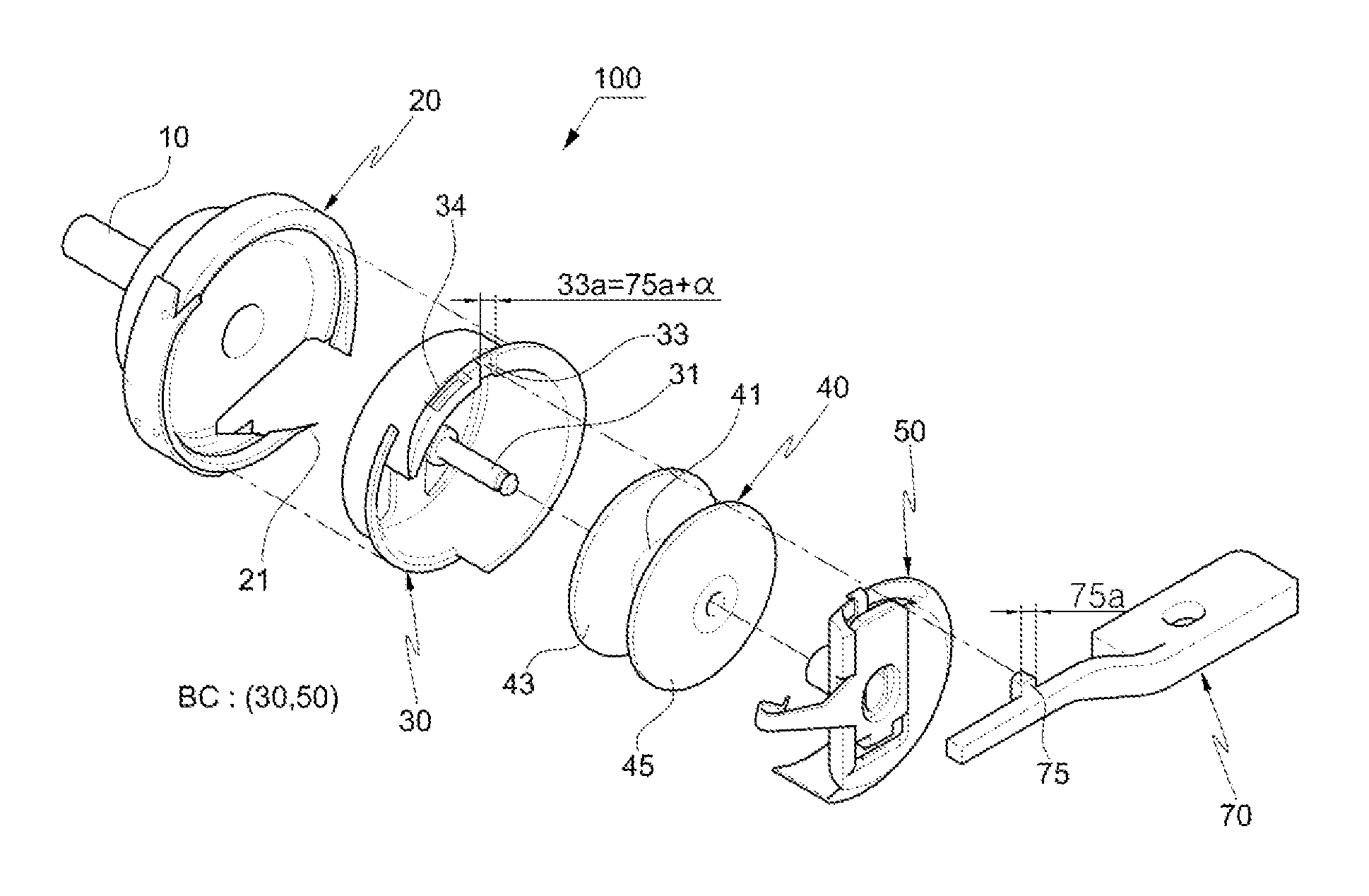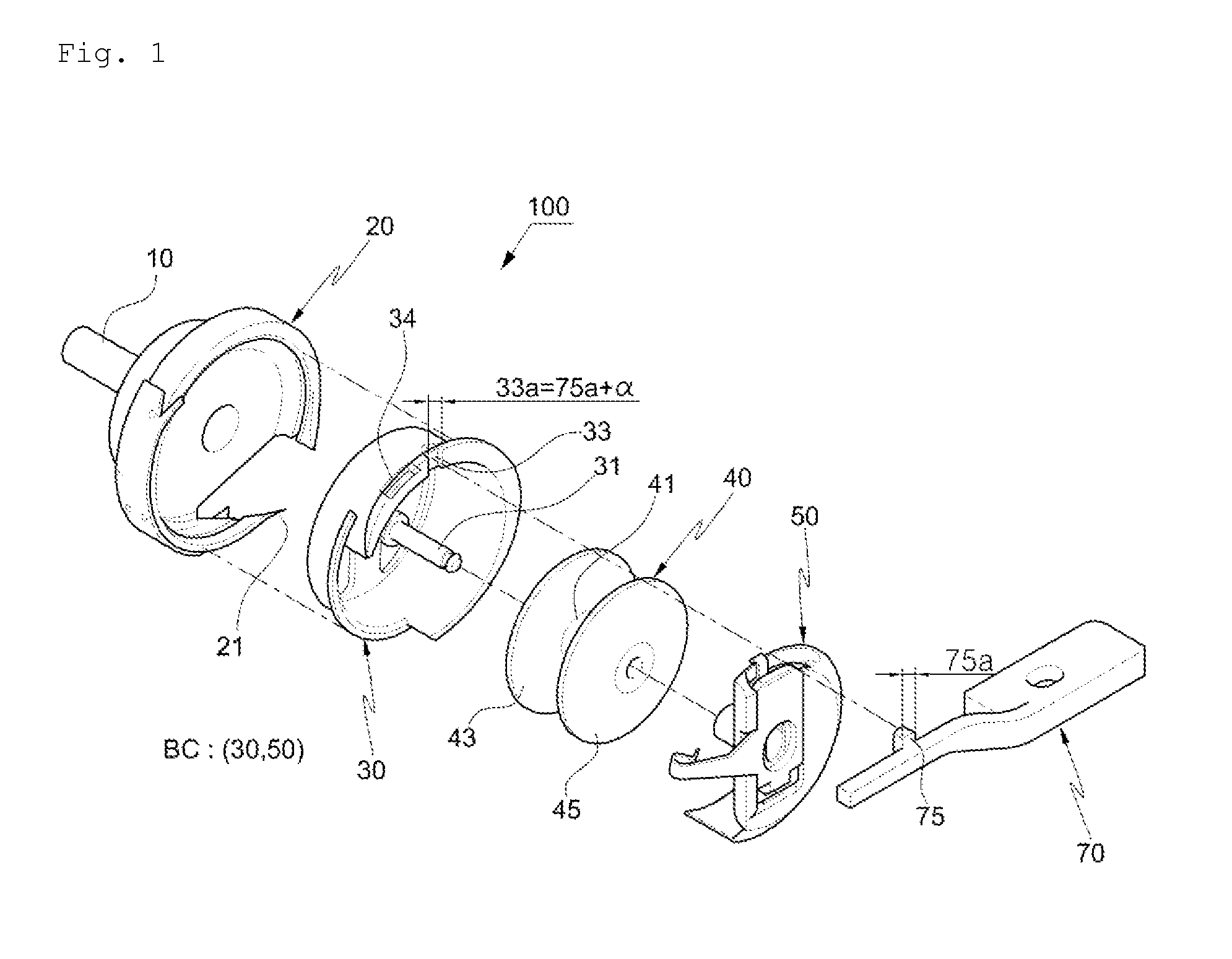Lower thread supply device for sewing machine
a technology of sewing machine and supply device, which is applied in the direction of sewing machine control device, sewing apparatus, textiles and paper, etc., can solve the problems of insufficient stitching, work efficiency, damage to the upper thread itself, etc., and achieve the effect of enhancing the load amount of the lower thread, and reducing the consumption amount of the upper thread
- Summary
- Abstract
- Description
- Claims
- Application Information
AI Technical Summary
Benefits of technology
Problems solved by technology
Method used
Image
Examples
Embodiment Construction
[0063]Hereinafter, a specific embodiment of the present invention will be described in detail with reference to the accompanying drawings.
[0064]FIGS. 3 to 5 are exploded perspective views illustrating the present invention, and when constituent elements shown in such exploded perspective views are coupled, a lower thread supply device is complete, as shown in FIG. 6.
[0065]A housing 100 is fixed to an appropriate position according to a lower portion of a main body of the sewing machine or a characteristic of the sewing machine and has a cylindrical pipe shape in which a front surface and a rear surface are opened along a central axis.
[0066]The housing 100 is fixed to a main body of the sewing machine using generally known various brackets, fixing volts, or pins, and a separate description thereof will be omitted. The housing 100 is fixed to the main body of the sewing machine, and even if a power shaft of the sewing machine rotates, the housing 100 does not rotate and maintains a fi...
PUM
 Login to View More
Login to View More Abstract
Description
Claims
Application Information
 Login to View More
Login to View More - R&D
- Intellectual Property
- Life Sciences
- Materials
- Tech Scout
- Unparalleled Data Quality
- Higher Quality Content
- 60% Fewer Hallucinations
Browse by: Latest US Patents, China's latest patents, Technical Efficacy Thesaurus, Application Domain, Technology Topic, Popular Technical Reports.
© 2025 PatSnap. All rights reserved.Legal|Privacy policy|Modern Slavery Act Transparency Statement|Sitemap|About US| Contact US: help@patsnap.com



